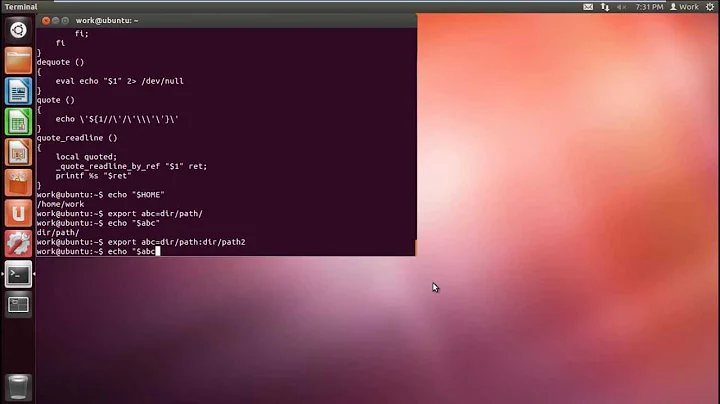Ubuntu: Edit environment variables via command line
Solution 1
You can set environment variables from the command line, but the new values will apply only to that terminal session and any processes launched from it. Environment variables are handled differently in Unix than they are in Windows. When a Unix process is created, it inherits an environment from its parent process that includes environment variables. Changes to a process's environment affect that process and its children, but not any other processes.
With that caveat, you can set an environment variable in a Bourne-like shell such as bash like this:
export MYVAR=myvalue
Solution 2
Edit /etc/environment. When you log out and log back in, the new values will be present.
Solution 3
If you want to modify/set environment variable(s) for your current shell session, which will last until you close/exit it, then
export MYVAR=value
If you want to modify/set environment variable(s) to be present every time you run your shell, then you should modify your shell's config file to include the above line.
To find out what shell you're running, type:
# echo $SHELL
Then edit the appropriate configuration file:
- For
shyou would modify~/.profile - For
bashyou would modify~/.bashrc - For
zshyou would modify~/.zshrcor~/.zshenv
Where the ~ character in each case represents the path to your home directory. If editing on the command line, you can just use it directly, e.g. to open the file in the vim editor:
# vim ~/.profile
If you're using a GUI-based editor you should just navigate to your home directory to find the appropriate config file.
Related videos on Youtube
Ted Karmel
Updated on September 17, 2022Comments
-
Ted Karmel over 1 year
How can you edit the environment variables via command line in ubuntu?
-
shortstuffsushi over 10 yearsI know this question is quite old, but this answer is not very useful or clear. Installing nano isn't really necessary to fix the problem, nor do you actually ever list the file you're using nano to edit. It looks like several other people posted solutions that are more thorough, you should consider accepting one.




